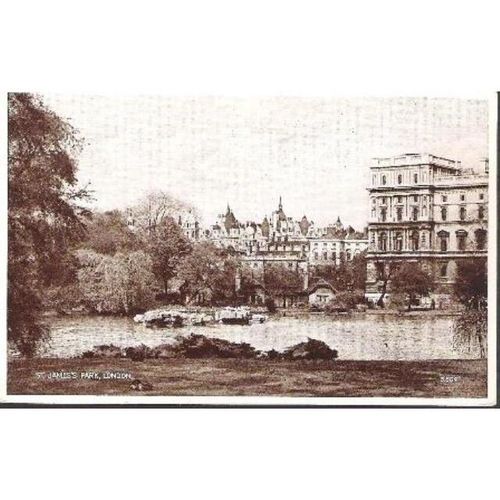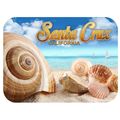London - St. James's Park - lake, government buildings - Valentines Photo Brown
- Condition : Used
- Dispatch : 2 Days
- Brand : None
- ID# : 131925186
- Quantity : 1 item
- Views : 221
- Location : United Kingdom

- Seller : justthebook (+1699)
- Barcode : None
- Start : Sun 21 Sep 2014 16:31:18 (EDT)
- Close : Run Until Sold
- Remain : Run Until Sold
Checks/Cheques
 for 1 item(s) edit
for 1 item(s) edit
Shipping Calculator
More Listings from This Seller view all
Seller's Description
- Postcard
- Picture / Image: St. James's Park, London
- Publisher: Valentines (Photo Brown)
- Postally used: no
- Stamp: n/a
- Postmark(s): n/a
- Sent to: n/a
- Notes / condition:
Please ask if you need any other information and I will do the best I can to answer.
Image may be low res for illustrative purposes - if you need a higher definition image then please contact me and I may be able to send one. No cards have been trimmed (unless stated).
------------------------------------------------
Postage & Packing:
Postage and packing charge should be showing for your location (contact if not sure).
No additional charges for more than one postcard. You can buy as many postcards from me as you like and you will just pay the fee above once. Please wait for combined invoice. (If buying postcards with other things such as books, please contact or wait for invoice before paying).
Payment Methods:
UK - PayPal, Cheque (from UK bank) or postal order
Outside UK: PayPal ONLY (unless otherwise stated) please. NO non-UK currency checks or money orders (sorry).
NOTE: All postcards are sent in brand new stiffened envelopes which I have bought for the task. These are specially made to protect postcards and you may be able to re-use them. In addition there are other costs to sending so the above charge is not just for the stamp!
I will give a full refund if you are not fully satisfied with the postcard.
----------------------------------------------
Text from the free encyclopedia WIKIPEDIA may appear below to give a little background information (internal links may not work) :
*************
St. James's Park is a 23 hectares (57 acres)[1] park in the City of Westminster, central London.[2] The park lies at the southernmost tip of the St James's area, which was named after a leper hospital dedicated to St. James the Less.
St. James's Park is bounded by Buckingham Palace to the west, The Mall and St James's Palace to the North, Horse Guards to the east, and Birdcage Walk to the south.
The park has a small lake, St. James's Park Lake, with two islands, West Island, and Duck Island, which is named for the lake's collection of waterfowl. This includes a resident colony of pelicans, which has been a feature of the park since the first gift of the birds from a Russian ambassador in 1664. The Blue Bridge across the lake affords a view west towards Buckingham Palace framed by trees. Looking east the view includes the Swire fountain to the north of Duck Island and, past the lake, the grounds known as the Horse Guards Parade, with the Horse Guards building, the Old War Office building and Whitehall Court progressively behind. To the south of Duck Island is the Tiffany fountain situated on Pelican Rock and past the lake is the Foreign and Commonwealth Office, with the London Eye, the Shell Tower and The Shard progressively behind.
The park is the most easterly of a near-continuous chain of parks that also comprises (moving westward) Green Park, Hyde Park and Kensington Gardens. The closest London Underground stations are St. James's Park, Victoria, and Westminster.
History[edit]
In 1532, Henry VIII purchased from Eton College an area of marshland, through which the Tyburn flowed. This land lay to the West of York Place, recently acquired by Henry from Cardinal Wolsey; it was purchased in order to turn York Palace, renamed Whitehall, into a dwelling fit for a king. On James I's accession to the throne in 1603, he ordered that the park be drained and landscaped, and kept exotic animals in the park, including camels, crocodiles, and an elephant, as well as aviaries of exotic birds along the south.[3]
During Charles II's exile in France under the Commonwealth of England, the young king was impressed by the elaborate gardens at French royal palaces, and on his ascension had the park redesigned in a more formal style, probably by the French landscaper André Mollet. This included the creation of the 775 by 38 metre (850 by 42 yard) canal visible in the old plan. Charles II opened the park to the public, as well as using the area to entertain guests and mistresses, such as Nell Gwyn. The park was notorious at the time as a meeting place for impromptu acts of lechery, of which John Wilmot, 2nd Earl of Rochester wrote in his poem ""A Ramble in St. James's Park"".[4]
In the late 17th and early 18th century cows were grazed on the park, and milk could be bought fresh at the ""Lactarian"", described by Zacharias Conrad von Uffenbach in 1710.[5]
The 18th century saw further changes, including the reclamation of part of the canal for Horse Guards Parade and the 1761 purchase of Buckingham House (now Buckingham Palace) at the west end of the Mall, for the use of Queen Charlotte.
Further remodelling in 1826–27, commissioned by the Prince Regent (later George IV) and overseen by the architect and landscaper John Nash, saw the straight canal's conversion to a more naturally-shaped lake, and formal avenues rerouted to romantic winding pathways. At the same time, Buckingham House was expanded to create the current palace and Marble Arch was built at its entrance, whilst The Mall was turned into a grand processional route, opened to public traffic 60 years later in 1887, the Marble Arch having been moved to its current location at the junction of Oxford Street and Park Lane in 1851 and replaced with the Victoria Memorial between 1906 and 1924.
type=printed
london borough=city of westminster
period=inter-war (1918-39)
publisher=valentines
postage condition=unposted
number of items=single
size=standard (140x89 mm)
Listing Information
| Listing Type | Gallery Listing |
| Listing ID# | 131925186 |
| Start Time | Sun 21 Sep 2014 16:31:18 (EDT) |
| Close Time | Run Until Sold |
| Starting Bid | Fixed Price (no bidding) |
| Item Condition | Used |
| Bids | 0 |
| Views | 221 |
| Dispatch Time | 2 Days |
| Quantity | 1 |
| Location | United Kingdom |
| Auto Extend | No |













